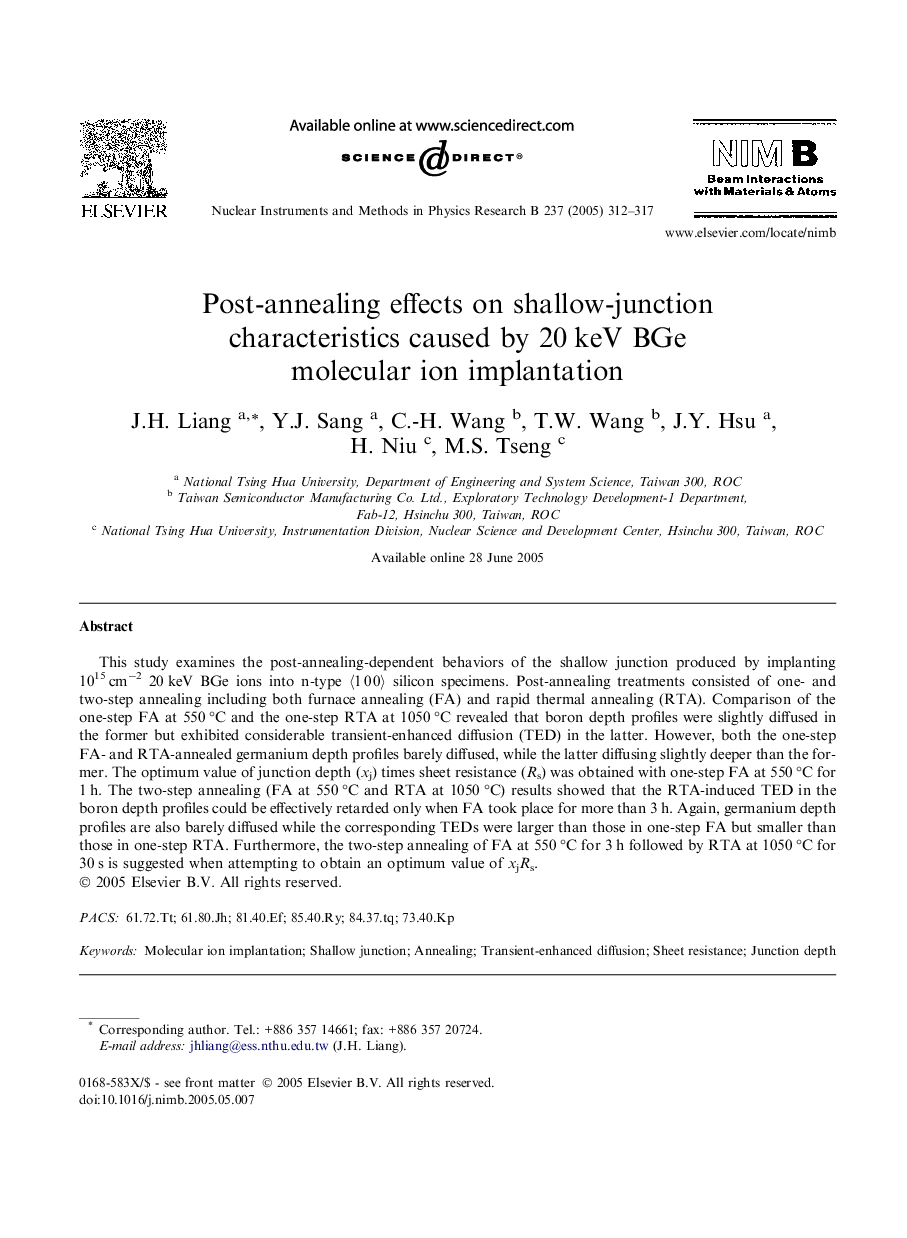| Article ID | Journal | Published Year | Pages | File Type |
|---|---|---|---|---|
| 9817767 | Nuclear Instruments and Methods in Physics Research Section B: Beam Interactions with Materials and Atoms | 2005 | 6 Pages |
Abstract
This study examines the post-annealing-dependent behaviors of the shallow junction produced by implanting 1015 cmâ2 20 keV BGe ions into n-type ã1 0 0ã silicon specimens. Post-annealing treatments consisted of one- and two-step annealing including both furnace annealing (FA) and rapid thermal annealing (RTA). Comparison of the one-step FA at 550 °C and the one-step RTA at 1050 °C revealed that boron depth profiles were slightly diffused in the former but exhibited considerable transient-enhanced diffusion (TED) in the latter. However, both the one-step FA- and RTA-annealed germanium depth profiles barely diffused, while the latter diffusing slightly deeper than the former. The optimum value of junction depth (xj) times sheet resistance (Rs) was obtained with one-step FA at 550 °C for 1 h. The two-step annealing (FA at 550 °C and RTA at 1050 °C) results showed that the RTA-induced TED in the boron depth profiles could be effectively retarded only when FA took place for more than 3 h. Again, germanium depth profiles are also barely diffused while the corresponding TEDs were larger than those in one-step FA but smaller than those in one-step RTA. Furthermore, the two-step annealing of FA at 550 °C for 3 h followed by RTA at 1050 °C for 30 s is suggested when attempting to obtain an optimum value of xjRs.
Keywords
Related Topics
Physical Sciences and Engineering
Materials Science
Surfaces, Coatings and Films
Authors
J.H. Liang, Y.J. Sang, C.-H. Wang, T.W. Wang, J.Y. Hsu, H. Niu, M.S. Tseng,
